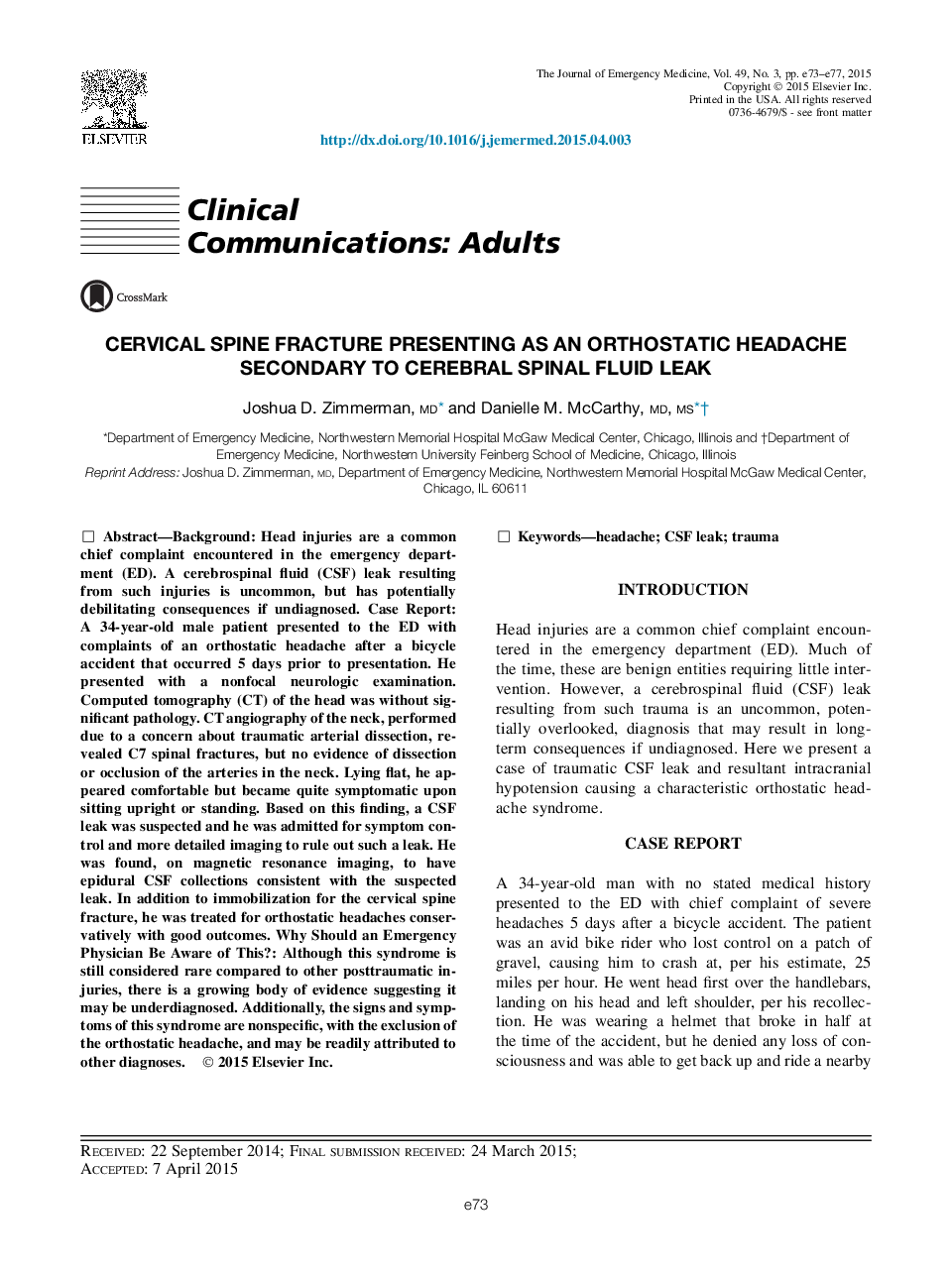| کد مقاله | کد نشریه | سال انتشار | مقاله انگلیسی | نسخه تمام متن |
|---|---|---|---|---|
| 3246428 | 1589121 | 2015 | 5 صفحه PDF | دانلود رایگان |
BackgroundHead injuries are a common chief complaint encountered in the emergency department (ED). A cerebrospinal fluid (CSF) leak resulting from such injuries is uncommon, but has potentially debilitating consequences if undiagnosed.Case ReportA 34-year-old male patient presented to the ED with complaints of an orthostatic headache after a bicycle accident that occurred 5 days prior to presentation. He presented with a nonfocal neurologic examination. Computed tomography (CT) of the head was without significant pathology. CT angiography of the neck, performed due to a concern about traumatic arterial dissection, revealed C7 spinal fractures, but no evidence of dissection or occlusion of the arteries in the neck. Lying flat, he appeared comfortable but became quite symptomatic upon sitting upright or standing. Based on this finding, a CSF leak was suspected and he was admitted for symptom control and more detailed imaging to rule out such a leak. He was found, on magnetic resonance imaging, to have epidural CSF collections consistent with the suspected leak. In addition to immobilization for the cervical spine fracture, he was treated for orthostatic headaches conservatively with good outcomes.Why Should an Emergency Physician Be Aware of This?Although this syndrome is still considered rare compared to other posttraumatic injuries, there is a growing body of evidence suggesting it may be underdiagnosed. Additionally, the signs and symptoms of this syndrome are nonspecific, with the exclusion of the orthostatic headache, and may be readily attributed to other diagnoses.
Journal: The Journal of Emergency Medicine - Volume 49, Issue 3, September 2015, Pages e73–e77
